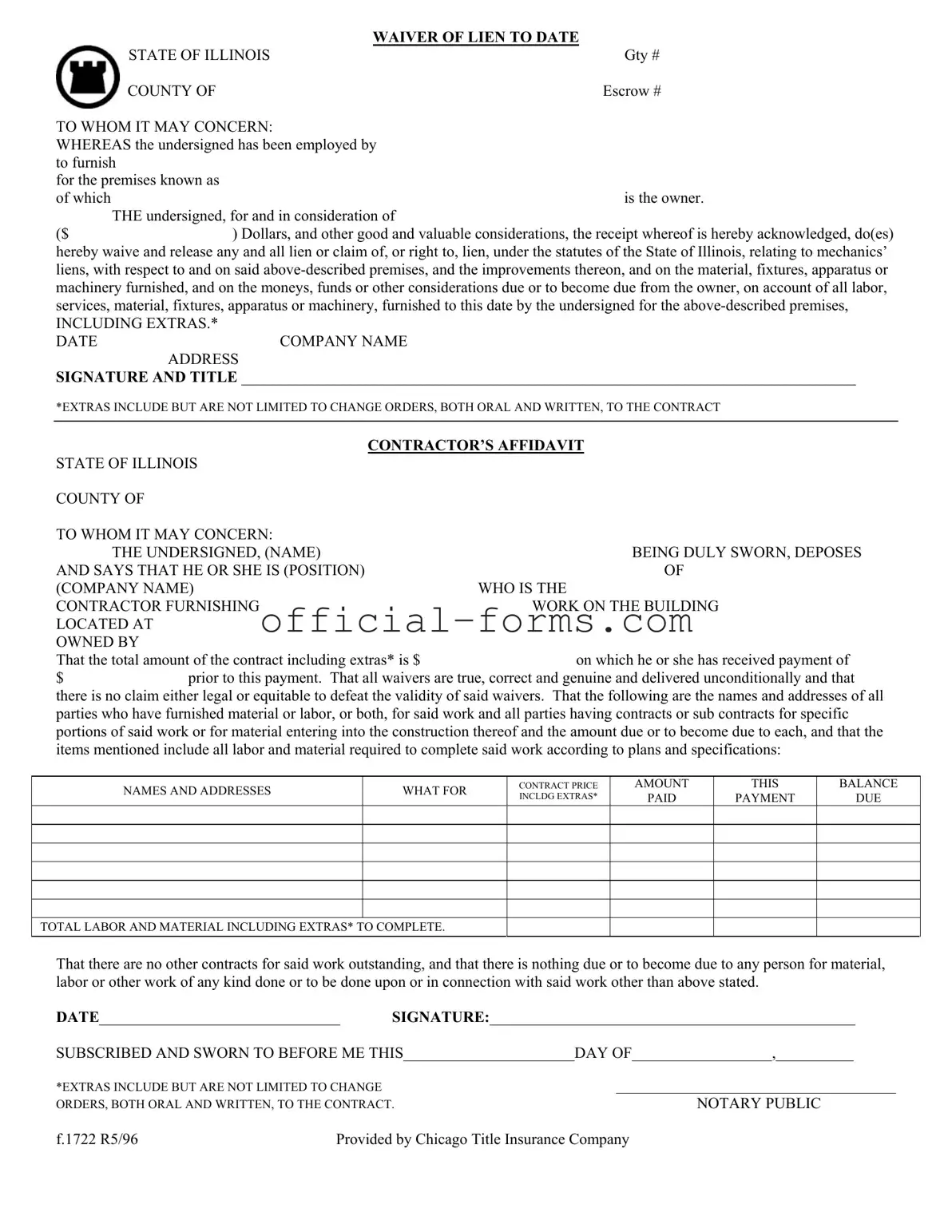Filling out the Chicago Title Waiver Format form can be a straightforward process, but several common mistakes can lead to complications. Understanding these pitfalls can help ensure that the form is completed correctly and efficiently.
One frequent error is failing to include the company name at the top of the form. This crucial detail identifies who is waiving the lien and can lead to confusion if omitted. Without the company name, the form may be deemed incomplete, delaying the process.
Another mistake involves leaving out the date of the waiver. This date is essential as it indicates when the waiver is effective. If the date is missing, it can create uncertainty regarding the timeline of the waiver, potentially affecting legal rights.
People often forget to specify the amount for which the waiver is being executed. This figure should reflect the total payment received or to be received. Omitting this information can lead to disputes over the extent of the waiver and what claims may still exist.
Additionally, individuals may neglect to accurately describe the premises involved. The waiver must clearly state the location and ownership details. A vague or incorrect description can render the waiver ineffective, leaving the party vulnerable to future claims.
Providing an incomplete list of labor and materials is another common error. The waiver requires a detailed account of all parties who have contributed labor or materials. Failing to include this information can lead to misunderstandings about who is owed payment and what has been completed.
Another mistake involves not properly signing the form. The signature of the person authorized to execute the waiver is mandatory. If the form is signed by someone without the authority to do so, it may be invalidated.
People sometimes overlook the need for a notary public to witness the signing of the waiver. A notary's signature and seal provide an extra layer of verification, ensuring that the document is legitimate and binding.
Some individuals fail to indicate whether they are submitting the waiver with or without extras. Clarifying this aspect is vital, as it can significantly impact the scope of the waiver and any future claims related to additional work or materials.
Lastly, individuals might not keep a copy of the completed waiver for their records. Retaining a copy is essential for future reference and can protect against disputes that may arise after the waiver is submitted.
By avoiding these common mistakes, individuals can ensure that their Chicago Title Waiver Format form is filled out correctly, safeguarding their interests and minimizing the risk of future complications.
